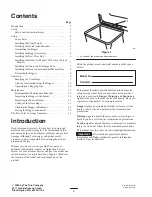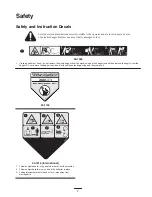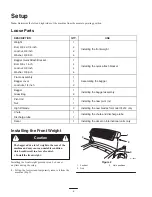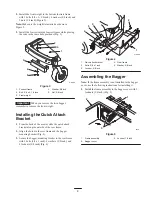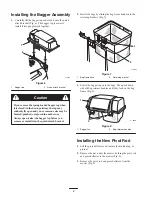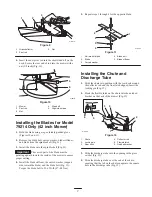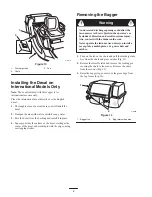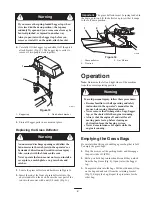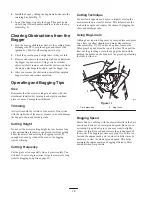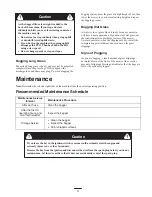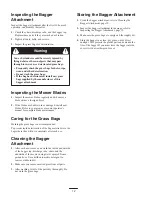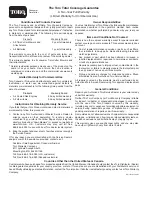
12
Inspecting the Bagger
Attachment
Inspect the bagger attachment after the first 10 hours of
operation, and monthly thereafter.
1.
Check the chute, discharge tube, and the bagger top.
Replace these parts if they are cracked or broken.
2.
Tighten all nuts, bolts, and screws.
3.
Inspect the grass bags for deterioration.
You or bystanders could be severely injured by
flying debris or thrown objects that may pass
through torn, worn, or deteriorated grass bags.
•
Frequently check the grass bags for holes, rips,
wear, and other deterioration.
•
Do not wash the grass bags.
•
If the bag has deteriorated, install new grass
bags supplied by the manufacturer of this
bagger attachment.
Warning
Inspecting the Mower Blades
1.
Inspect the mower blades regularly and whenever a
blade strikes a foreign object.
2.
If the blades are badly worn or damaged, install new
blades. Refer to your mower or mower operator’s
manual for complete blade maintenance.
Caring for the Grass Bags
Washing the grass bags is not recommended.
To prevent rapid deterioration of the bag material, store the
bags where they will dry completely after each use.
Cleaning the Bagger
Attachment
1.
After each use, remove and wash the inside and outside
of the bagger top, discharge tube, chute, and the
underside of the mower, using water sprayed from a
garden hose. Use a mild automotive detergent to
remove stubborn dirt.
2.
Make sure you remove matted grass from all parts.
3.
After washing, let all of the parts dry thoroughly. Do
not wash the grass bags.
Storing the Bagger Attachment
1.
Clean the bagger attachment; refer to Cleaning the
Bagger Attachment, page 12.
2.
Inspect the bagger attachment for damage; refer to
Inspecting the Bagger Attachment, page 12.
3.
Make sure the grass bags are empty and thoroughly dry.
4.
Store the bagger in a clean, dry place, out of direct
sunlight. This protects the plastic parts and extends the
life of the bagger. If you must store the bagger outside,
cover it with a weatherproof cover.


